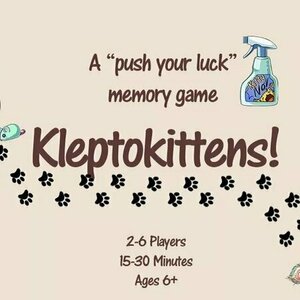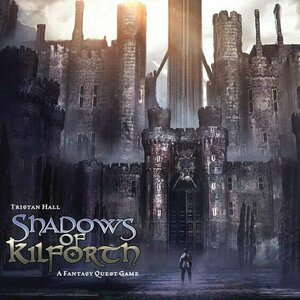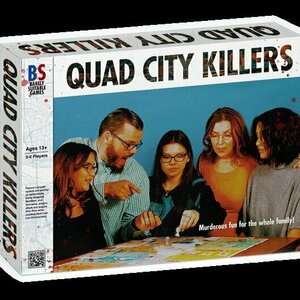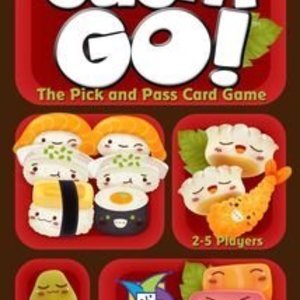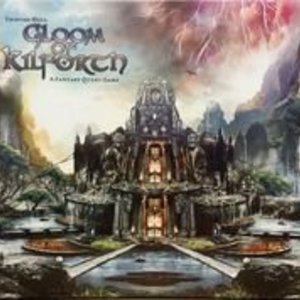Purple Phoenix Games (2266 KP) rated Kleptokittens! in Tabletop Games
Jun 21, 2021
Disclaimer: We were provided with a Tabletop Simulator version of this game for the purposes of this preview. The images below are screenshots from my plays. The components may not be finalized and could change after a successful Kickstarter campaign. -L
Kleptokittens! is a memory game of push your luck in which players are trying to amass the most points over the course of 5 rounds. Setup is simple – shuffle the deck of cards, and then lay them out face-down in a grid. Each player receives a Stash player mat, and the point tokens are set off to the side. Grab a timer, choose a starting player, and you are good to go!
On your turn, you will have 30 seconds to flip over cards and match as many pairs as possible. If you turn over a match, leave them face-up, and continue flipping cards. If the 2 cards you revealed do not match, flip them back face-down and keep looking for a pair. At the end of the 30 seconds, count up the number of matches you found, and take as many treasure tokens to your Stash. The game then moves to the next player, the cards are reset (either flipped back facedown, or shuffled and placed anew for an added challenge) and the game continues until all players have had a turn. That signifies the end of the first round. A new round commences as before, and the game keeps going until 5 rounds have been completed. The player who has amassed the most treasure tokens is named the winner!
Seems simple enough, right? Well, there are a couple of twists. If, at any point in your turn, you reveal a Spray Bottle, your turn immediately ends, regardless of how much time is remaining on your timer. You will then only score your last match made, and any previous matches this turn are lost! How much are you willing to push your luck to make matches? Or should you play it safe and quit while you’re ahead? It’s ultimately up to you! Conversely, you could also flip over a Catnip card. Catnip cards are collected to your Stash and are score multipliers at the end of the game! Put your memory to the test, and see how far you are willing to push your luck in hopes of coming out victorious.
At its core, Kleptokittens! is a matching/memory game, and the gameplay is pretty straightforward. The Spray Bottle and Catnip cards add that small element of push your luck that really helps elevate it beyond a simple matching game. You’ve got 3 matches – should you risk going for a 4th, and thus take the lead? Or should you play it safe, since you can’t remember exactly where you last saw that Spray Bottle card? There are some real stakes in this game, and that keeps the gameplay engaging for everyone. Another great thing about Kleptokittens? It’s really accessible for younger gamers! Matching and memory games are great for development in children. And it’s not every day that you find a game fun for adults that can also be played by the littles. The gameplay can be tailored to the group as well. Got a bunch of junior gamers? Maybe take out the Spray Bottle and Catnip cards for now and extend that timer to 1 full minute. Playing with a bunch of adult friends? Try re-shuffling the deck after every player so nobody can rely on the previous player’s grid for their memory of card placements. You can play this game with just about anyone, and that is the sign of a good game to me.
As mentioned earlier, this was a Tabletop Simulator version of the game, so I can’t really talk too much about component quality. I will say however that the art style is cute and fun, and matches the lighthearted feel of the game. The digital version of the game looks great, and I can’t wait to see how the physical version turns out!
Overall, I think that Kleptokittens! is a fun little filler game. A memory/matching game isn’t that novel these days, but the addition of the push your luck element makes for a unique gameplay that feels fun and fresh. The theme is cute, the gameplay is straightforward and simple to understand, and it can be played with gamers of all ages – so what’s not to love? If you’re in the market for something light and fun, I would recommend checking out Kleptokittens! It hits Kickstarter on June 23, 2021, so be sure to snatch it up like kittens snatch up little treasures in this game!
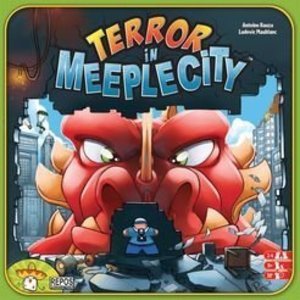
Terror in Meeple City
Tabletop Game
In Terror in Meeple City (formerly known as Rampage), you arrive in Meeple City as a gigantic,...
Purple Phoenix Games (2266 KP) rated Shadows of Kilforth: A Fantasy Quest Game in Tabletop Games
Sep 3, 2020
Shadows of Kilforth is subtitled, “A Fantasy Quest Game.” Right there in the title you find out exactly what you are up against in the very foreboding but unassumingly-sized box. A game set in a fantasy world that is focused on questing. I have to admit up front that this review will be treated a little differently as the rulebook is hefty and nobody wants to read a thorough rules essay on Shadows. So I will give you a very high-level overview of the main steps and then give you my thoughts on how it all works together.
DISCLAIMER: We were provided a copy of this game for the purposes of this review. This is a retail copy of the game, so what you see in these photos is exactly what would be received in your box. I do not intend to cover every single rule included in the rulebook, but will describe the overall game flow and major rule set so that our readers may get a sense of how the game plays. For more in depth rules, you may purchase a copy online or from your FLGS. -T
Shadows of Kilforth is essentially a card and dice RPG-esque adventure game with an Asian-style theme but set in a fantasy world where locations will be devastated into gloom (building upon the first in the series Gloom of Kilforth). The players, as the heroes, have the daunting task of journeying throughout Kilforth’s 25 locations to collect items, allies, spells, and titles to overcome main quests and subquests before every location falls into gloom. These quests usually have the players gathering specific card types to satisfy and complete. Once main player storyline quests, called Sagas, are completed the hero levels up and when they complete their fourth quest in their main Saga they may attempt their Finale and then may finally assault the big boss, the Ancient.
Each turn players have Action Points (AP) to spend on doing different actions: movement, discovering rumours (yes, I know it’s the Queen’s English), confrontations, and regaling a Saga chapter, among several others. Some actions are free actions, called Deeds. These include resolving loot tokens, assaulting an ancient, exchanging items between players, and several others. By using combinations of Actions and Deeds players will be able to travel around collecting those items, allies, and so forth needed to complete their Saga chapters.
To complete objectives and quests, players will typically be rolling dice to meet requirements on the cards. This, as all role-players know, can be either supremely lucky or incredibly and predictably debilitating. Skill checks are abundant in Shadows and diversifying characters may or may not have advantages by being able to complete Fight, Study, Sneak, and Influence tests. Players will win if they can complete their Sagas and defeat the Ancient before all of the locations fall into gloom, signaling the end of the game.
All this, again, is very high-level and there are many intricacies in Shadows that I just cannot go over for the sake of time and the health of my typing fingers. But, the game can be played solo, cooperatively, or competitively. So depending on the mode of play and number of players Shadows can range from a 45 minute foray to multi-hour epics. This is why I have played this solo with one character for my plays.
Components. Shadows of Kilforth is very card-heavy, but also includes other goodies. The cards themselves are firstly quite numerous, but also good quality. I can see myself sleeving this and loving every minute of that process. Aside from the cards, the game includes standees for player pieces on the card map, wooden components to track HP, AP, Fate, Obstacles, Gold, Hidden characters, great swirly 6d6, and also cardboard chits for Loot tokens. I haven’t even mentioned the art yet and that may be the most stunning component in this game! I LOVE a game with great art, and Shadows has simply amazing art. This is not usually my style of game art either, but it is so pleasing and everything makes sense and gets me immersed in the game. Everything provided is wonderful quality and an absolute joy to use during play.
Ok so like always, we place our ratings graphic right at the top of our posts so our readers can see right away what we think of the game. As you can tell, I love Shadows of Kilforth. It has essences of so many games I enjoy pieced together in a very attractive and captivating package. The movement and subsequent destruction of map-cards are reminiscent of Forbidden Island/Desert and Tiny Epic Defenders, which I really love (don’t hate – it’s a good game). The gathering of select card types and returning to a location to complete feels like fetch quests in MMORPGs (Final Fantasy XI being my main squeeze for many years). Obviously dice skill checks and level ups from tabletop RPGs are in there as well.
Shadows is just such a great collection of mechanics that I love that I can see myself playing this game over and over and over. Caveat: I will never play this any way other than absolutely solo. My first play, yes a learning session, was just shy of two hours from setup to tear-down. Adding players will increase game length, and playing with AP-prone friends is a no-go for me on Shadows; I had to reference both the excellent provided cheat sheet and the rulebook throughout the play but I eventually got the hang of it and was able to fly through. I may play this solo but with multiple characters cooperatively someday, but I do not wish to play this with other people. Ever.
So here’s my final thought. Shadow of Kilforth is a beefy game, but is well worth the time and effort to learn and play a couple times before passing judgment. It has everything I love in a game and I can’t stop thinking about it. I want to play all the different Race/Class combinations and just dunk on all the Ancients. If only my dice didn’t hate me so much. I will certainly be keeping this one forever, and if you are a fan of fantasy themed adventure card games with heavy use of dice and cool components, DEFINITELY take a look at Shadows of Kilforth. As I am the only one who has played this, I speak for the team in saying Purple Phoenix Games gives this one a 6 / 6. Treat yoself to this one, folks.
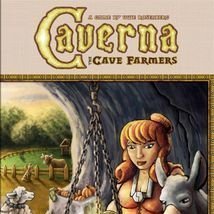
Caverna: The Cave Farmers
Tabletop Game
CLASSIFICATION EDIT Type Strategy Category Animals Economic Fantasy Farming Mechanisms ...
Boardgames UweGames
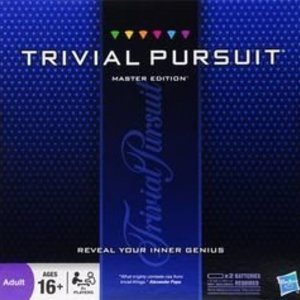
Trivial Pursuit: Master Edition
Tabletop Game
Thee Trivial Pursuit Master Edition game adds a modern twist to the classic game you love. It will...

Drakenlords: CCG Card Duels
Games, Entertainment and Stickers
App
Welcome to one of the best CCG games on mobile! Drakenlords is a multiplayer fantasy card game where...
Purple Phoenix Games (2266 KP) rated Quad City Killers in Tabletop Games
Jan 30, 2021
Quad City Killers (or QCK) is a competitive game of moving around a map and eliminating points of interest by using resources from hand. Or, in actual gamespeak, stalking the streets of the QC murdering prey by using weapons, modifiers, and scenario cards to adjust the winds of chance for success.
DISCLAIMER: We were provided a prototype copy of this game for the purposes of this review. These are preview copy components, and I do not know for sure if the final components will be any different from these shown. Also, it is not my intention to detail every rule in the game, as there are just too many. You are invited to download the rulebook, back the game through the Kickstarter campaign ending March 5, 2021, or through any retailers stocking it after fulfillment. -T
To setup place the large map (an actual map that you would find in your grandparents’ Oldsmobile) on the table. Shuffle the Prey deck and the Resources deck separately and place them in their spots on the map. Place the Heat tokens on the lowest space in each city. Keep the three dice nearby for all players’ use. Each player will choose a serial killer profile mat, a color of skull mover token, and Dexterity token to track progress. Each player will also draw five Resource cards from the deck and one Prey card to place on the board in a city along with their skull mover token. The game may now begin!
The first thing each player will do on their turn is perform a Hunt action by drawing and placing on the map the top card of the Prey deck. Most Prey are color-coded to be placed in a matching city, but some are not and may be placed in any city on the map. Next, the player may perform any three actions from the following: Hunt, Travel, Attack, Scenario, Discard.
Hunt works the same as the action performed at the beginning of each turn: draw a Prey card and place it on the board. In order to Travel to a new city the player will roll the dice. For a value of 1+ the player may travel to any city within their current state. For a value of 2+ the player may cross the Old Man to the other side (preferably using the half-finished under-construction new I-74 bridge). A player may play a Scenario card from their hand, and if it shows the Action icon they will spend one of their three actions to play and resolve it. A player may also choose to Discard two cards from their hand and replace them with cards drawn from the Resource deck for an action.
The game would not be named Quad City Killers if killing was not involved somehow. As the final option of action to be taken on a turn a player may choose to Attack a Prey card in the same city in which the player’s token resides. To Attack, the player will consult the Prey card’s printed defense value for their target number. The player will then combine any Resource cards they may have in hand with their current Dexterity score (tracked on their player mat) and the roll of the three dice. If the end result matches or exceeds the Prey’s defense value the Prey is eliminated. The player collects the Prey card for a trophy and for its Notoriety value (victory points) at game end.
Resource cards come in different flavors: Weapons, Scenarios, Modifiers, and Ego. Weapon cards are just that: weapons. They may be used once for an attempted kill and then are discarded. Scenarios may mess with opponent tactics, allow players to move Prey cards to different cities, or other various activities. Modifiers may also adjust the current Advantage enjoyed by the player or be played on a Prey card to lower its defense value. Ego cards (and also some Weapon cards) will have an M.O. icon on them and may be placed directly on the player mat. These M.O. cards offer a once-per-turn advantage for the player and are very powerful.
The game continues in this fashion of taking turns moving around the map, hunting prey and killing them, and using Resources to adjust the difficulty of the murder. Once a player has increased their Dexterity token to the end of the track the game ends and the players count up Notoriety values (VP) of all slain Prey cards to arrive at the greatest serial killer the Quad Cities has ever seen (which, being from the QC would be saying something – I don’t remember ANY serial killers here).
Components. Okay, this was a super cool game to open up in the mail. Inside the mailer box was this strange Evidence bag. I have never seen an Evidence bag in my life so I wasn’t quite sure what was inside. But when I opened it and saw it was the components for the game I immediately smiled at how cool that was to include. It certainly made an impression. Now, please remember that this is a prototype copy of the game, and the finished version will have slightly different and improved components. That said, what we were provided is very close to final quality (and better than some games I have in my collection!). The cards are all fine, the dice are dice, and the tokens are well-designed and interesting. The best component, for me, is the excellent map of the QCA. It folds/unfolds like an old map would (prior to GPS) and has my hometown right on it! Luckily I live in a suburb(?) of the Metropolitan QCA so my house is nowhere to be found on the map, but it is very strange and exciting to play a game on a map of your home.
The game as a whole is pretty good. Though the estimated time to finish the game is quoted at 90-180 minutes (and maybe with the full compliment of players), my plays with my wife were well under an hour each time. We both enjoyed the game quite a bit once we got over the whole premise of it. The theme is obviously dark and macabre, but in the end it is still just a game.
I felt very engaged for every second of the game as I watched my wife nail roll after roll during her Attack actions while I fail to manage even a roll of 2+. Yes, I am unable to roll 2+ on THREE DICE. My issues aside, the dice really do add a layer of chance (obv) that all the accounting and cardplay just will not cover. I like that. I like chance in my games, even when it goes against me. I also enjoyed having five actions from which to choose three on my turn, but I could also use the same action all three times if I wished. More options is usually good, and having more than one obvious route or strategy is a huge bonus for me.
All in all I really did enjoy this game quite a bit. Again, the theme may be off-putting for some, and I will not play this game with my children until they are probably older than the suggested 13+ but I can definitely see myself breaking this out with a group of adults who are itching for something completely different from what they are accustomed to playing. If you are like me and need something just absolutely jarring in your collection, I urge you to take a look at Quad City Killers, on Kickstarter now until March 5, 2021. Just stay out of Milan (pronounced MY-lin) and we will be fine.
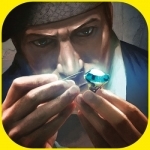
Splendor™
Games
App
** ONLINE MULTIPLAYER NOW AVAILABLE !!! ** The OFFICIAL digital adaptation of the best-selling...
BoardGames BoardgameApps GreatGames
Purple Phoenix Games (2266 KP) rated Sushi Go! in Tabletop Games
Aug 4, 2020
You and your friends enter the local sushi restaurant, ready for a relaxed meal. As the dishes pass by, you begin to realize that your friends are all vying for the same tasty selections that you are! You must be quick to snatch them up before they do, and end up with the yummiest sushi combination in the restaurant!
DISCLAIMER: There are expansions to this game, but we are not reviewing them at this time. Should we review them in the future we will either update this review or post a link to the new material here. -T
Sushi Go! is a game of card drafting, hand management, and set collection in which you are trying to collect combinations of different sushi dishes for the most points at the end of 3 rounds. Each round is played as follows: look at your hand of cards, select one to keep, pass the remaining cards to your neighbor, repeat process until all cards have been claimed. Points are added at the end of the round, cards are collected and shuffled, and then the next round begins. Simple, right? Mechanically, yes. But strategically, no! You’ve got to make decisions with each hand to decide which types of sushi you want to focus on in a given round. Keep an eye on your opponents selections as well, because you miiiiight just be able to keep them from getting a complete set and scoring tons of points!
I can’t remember if I’ve said this in any of my previous reviews, but I LOVE games of card drafting and set collection. They are MY JAM. So I love Sushi Go! The gameplay is similar to 7 Wonders (maybe that’s why Bryan rated it the lowest in the group…), and it requires way more strategy than you might think. Throughout the rounds, you know what cards your opponents have kept, so you can actually see what points they have the potential to earn. That might influence which card you choose to keep – even if it scores you no points, it could hinder your opponent from scoring those points as well! You’re not only trying to collect complete sets of certain cards, you’re trying to make sure your opponents aren’t monopolizing high-scoring cards.
Another thing I love about Sushi Go! is that it is a fast game. It can be pretty strategic, but the game plays so fast that it doesn’t feel too heavy. I usually play it as a short filler between some bigger games. The neat thing is that it still keeps my mind moving and keeps me engaged throughout the game – it doesn’t just feel like a throwaway game between meatier games.
The game itself consists of a hefty deck of cards, housed in a cute tin. The card quality is good, and they feel sturdy in hand. The artwork is perhaps one of the best parts of Sushi Go! The cards are bright and colorful, and the adorable faces on every piece of food are delightful to look at. Dare I even say, cute enough to eat?
I think that Sushi Go! is a great game to use to introduce new gamers to the hobby. It’s simple to learn, fast to play, strategic enough to be engaging, and not complicated enough to be daunting to new players. I might not always think to play Sushi Go!, but if someone suggests it, I will never say no! Purple Phoenix Games gives it a tasty 19 / 24.
Paul Kellett (118 KP) rated Gloom of Kilforth: A Fantasy Quest Game in Tabletop Games
May 1, 2019
You start by choosing a character, class and a saga to tell. Your character and class give you your starting stats (combat, knowledge, sneak and influence) while the sagas are 4 chapters long and each chapter requires 2 (or 3 if only playing 1-2 players) keywords to complete. Completing a chapter levels up your character giving you more health and a new skill.
Keywords are found on the cards you encounter as you search the map and are colour coded to give you a hint to where they are most likely to be found.
The map is a 5x5 grid of cards with Sprawl City in the centre and a mix of Forests, Mountains, Plains and Badlands arranged randomly around it.
Every time you enter an empty location, you draw a card from the relevant terrain deck and interact with it.
Encounters are won by rolling a number of d6 dice equal to your skill in the stat list d on the encounter. Success is on a 5 or 6 so playing to your character's strengths is paramount.
Each player starts with 4 health and at the start of each round, you gain action points equal to your current health which makes strategy and stealth the key to early success.
It also means that the game starts slowly but starts to snowball as you complete the chapters of your saga and level up.
At the end of each round, you make camp and draw a night card which causes a location to fall into gloom and possibly trigger an event. A character ending the day on a gloom location will suffer 1 health point loss.
This is the game timer, so you have 25 days to complete your saga, gain more skills and equipment and confront the big bad.
Despite the random encounter draws and the size of each terrain deck (30+ cards each), every card has been carefully designed to fit into the game and let you narrate a unique story as you play.
If you want a unique narrative adventure game with a solid depth of strategy, look no further.
